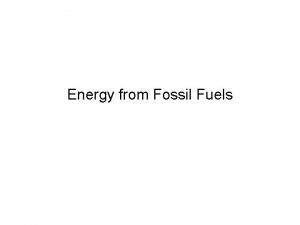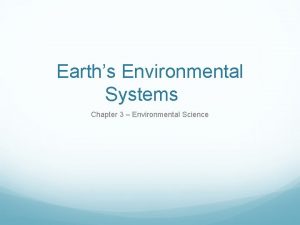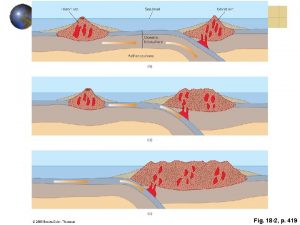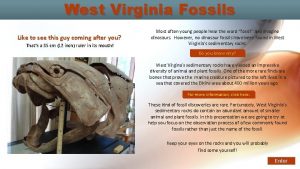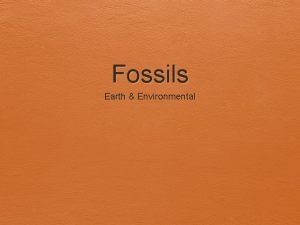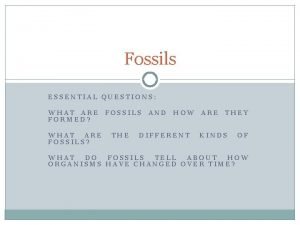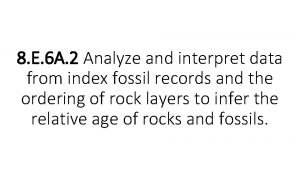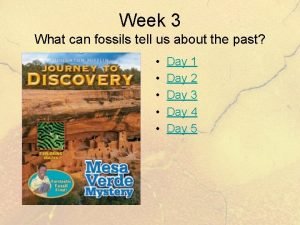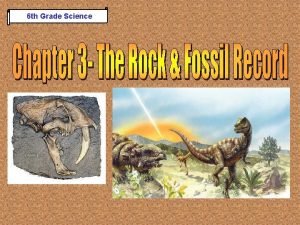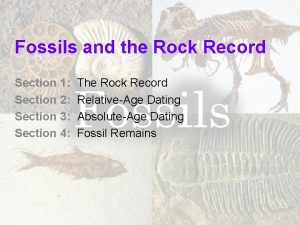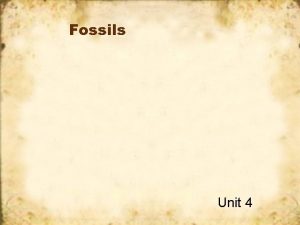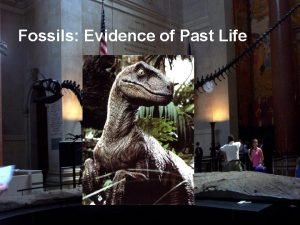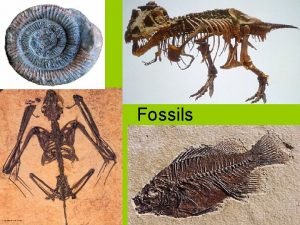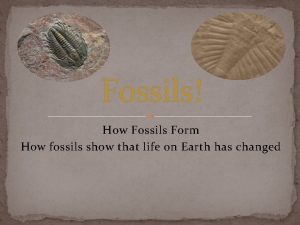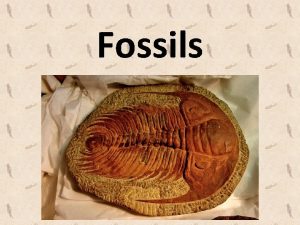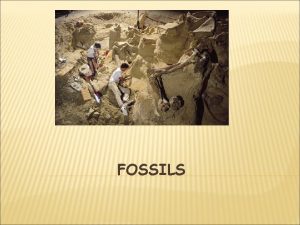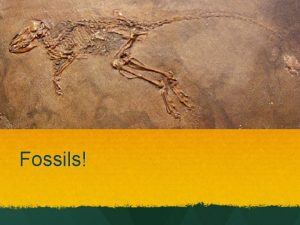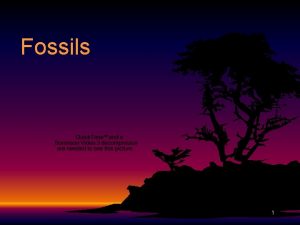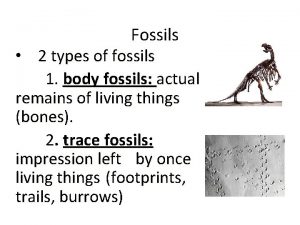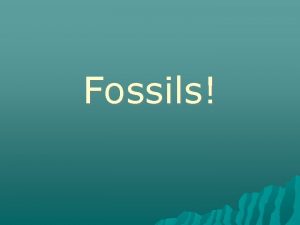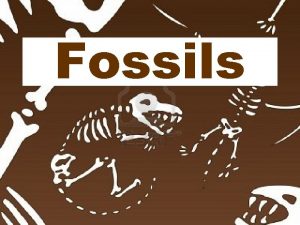Fossils Earth Environmental What is a fossil A














- Slides: 14

Fossils Earth & Environmental

What is a fossil? A fossil is the preserved remains of a once-living organism. What do fossils tell us? Fossils give clues about organisms that lived long ago. They help to show that evolution has occurred. They provide evidence about how Earth’s surface has changed over time. Fossils help scientists understand past climates/environments.

HOW IS A FOSSIL FORMED? 1. Sediment 2. Layers 3. Movement 4. Erosion An animal is buried by sediment, such as volcanic ash or silt, shortly after it dies. Its bones are protected from rotting by the layer of sediment. More sediment layers accumulate above the animal’s remains, and minerals, such as silica (a compound of silicon and oxygen), slowly replace the calcium phosphate in the bones. Movement of tectonic plates, or giant rock slabs that make up Earth’s surface, lifts up the sediments and pushes the fossil closer to the surface. Erosion from rain, rivers, and wind wears away the remaining rock layers. Eventually, erosion or people digging for fossils will expose the preserved remains.

Evidence of Evolution-The Horse B Horse A Use the information found at the following website and summarize what you learned in your guided notes. http: //chem. tufts. edu/science/evolution/horseevolution. htm

Evidence of Evolution Note how the distance of the wrist bones from the ground changes. What else has changed? wrist

Evidence of Evolution How have the bones in horse feet changed over time? Why might this have happened?

Evidence of Geologic Change Using the website below, read about “Fossil Evidence to Support the Theory of Continental Drift. ” Document what you learned on your guided notes. http: //www. enchantedlearning. com/subjects/dinosaurs/glossary/Contdrift. shtml

Evidence of Environmental Changes Using the website below, explore the links o the left side of the page. What can climates tell us about past and future climates? Explain in your guided notes. http: //nature. nps. gov/geology/nationalfossilday/climate_change_past. cfm

FIVE MAIN TYPES OF FOSSILS Petrified Fossils Molds and Casts Trace Fossils Carbon Films Preserved Remains

PETRIFIED FOSSILS • The word “petrified” means “turning into stone. ” • Petrified fossils form when minerals replace all or part of an organism. PETRIFIED FOSSIL The Field Museum in Chicago displays a fossil of a Tyrannosaurus rex. • Water is full of dissolved minerals. It seeps through the layers of sediment to reach the dead organism. When the water evaporates, only the hardened minerals are left behind.

MOLDS AND CASTS • A mold forms when hard parts of an organism are buried in sediment, such as sand, silt, or clay. MOLD FOSSIL This mold, or imprint, is of an extinct mollusk called an ammonite. • The hard parts completely dissolve over time, leaving behind a hollow area with the organism’s shape. • A cast forms as the result of a mold. • Water with dissolved minerals and sediment fills the mold’s empty spaces. CAST FOSSIL This ammonite cast was discovered in the United Kingdom. • Minerals and sediment that are left in the mold make a cast. • A cast is the opposite of its mold.

CARBON FILMS • All living things contain an element called carbon. • When an organism dies and is buried in sediment, the materials that make up the organism break down. FERN FOSSIL This carbon-film fossil of a fern is more than 300 million years old. • Eventually, only carbon remains. • The thin layer of carbon left behind can show an organism’s delicate parts, like leaves on a plant.

TRACE FOSSILS • Trace fossils show the activities of organisms. • An animal makes a footprint when it steps in sand or mud. FANCY FOOTWORK This dinosaur footprint was found in Namibia, Africa. • Over time the footprint is buried in layers of sediment. Then, the sediment becomes solid rock.

PRESERVED REMAINS Some organisms get preserved in or close to their original states. Here are some ways that can happen. Amber An organism, such as an insect, is trapped in a tree’s sticky resin and dies. More resin covers it, sealing the insect inside. It hardens into amber. Tar An organism, such as a mammoth, is trapped in a tar pit and dies. The tar soaks into its bones and stops the bones from decaying. Ice An organism, such as a woolly mammoth, dies in a very cold region. Its body is frozen in ice, which preserves the organism—even its hair!
 What are the environmental impacts of fossil fuels
What are the environmental impacts of fossil fuels Mh 605
Mh 605 Earth's environmental systems chapter 3
Earth's environmental systems chapter 3 Match the letter
Match the letter Horse ancestor
Horse ancestor Glossopeteris
Glossopeteris Fossils by ogden nash
Fossils by ogden nash Where can trace fossils be found
Where can trace fossils be found What do fossils tell us about the past
What do fossils tell us about the past Carbon films
Carbon films Difference between mold and cast fossil
Difference between mold and cast fossil What do fossils tell us about the past
What do fossils tell us about the past Relative chronology
Relative chronology Features of phacops and tropites as index fossils
Features of phacops and tropites as index fossils Mold fossil
Mold fossil
